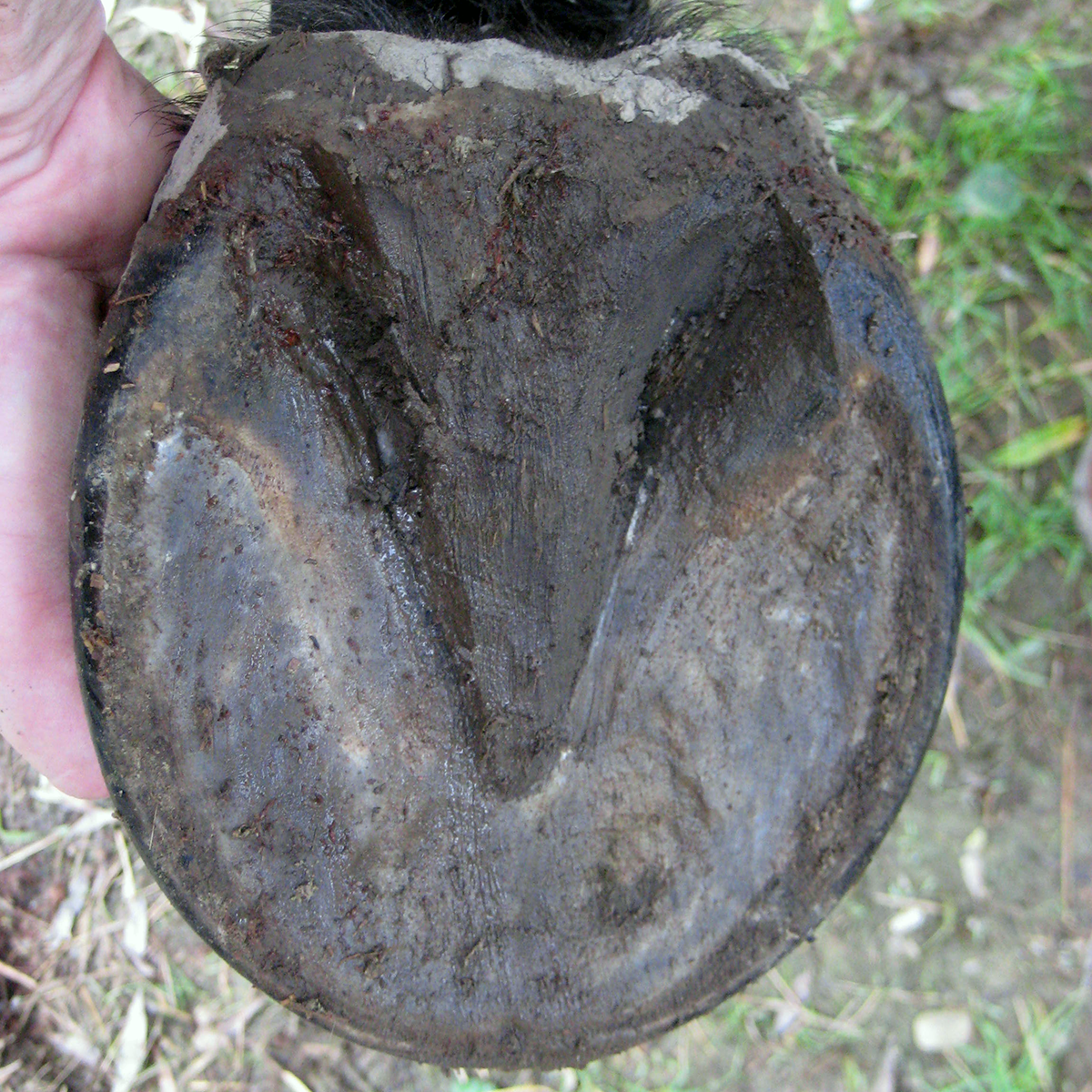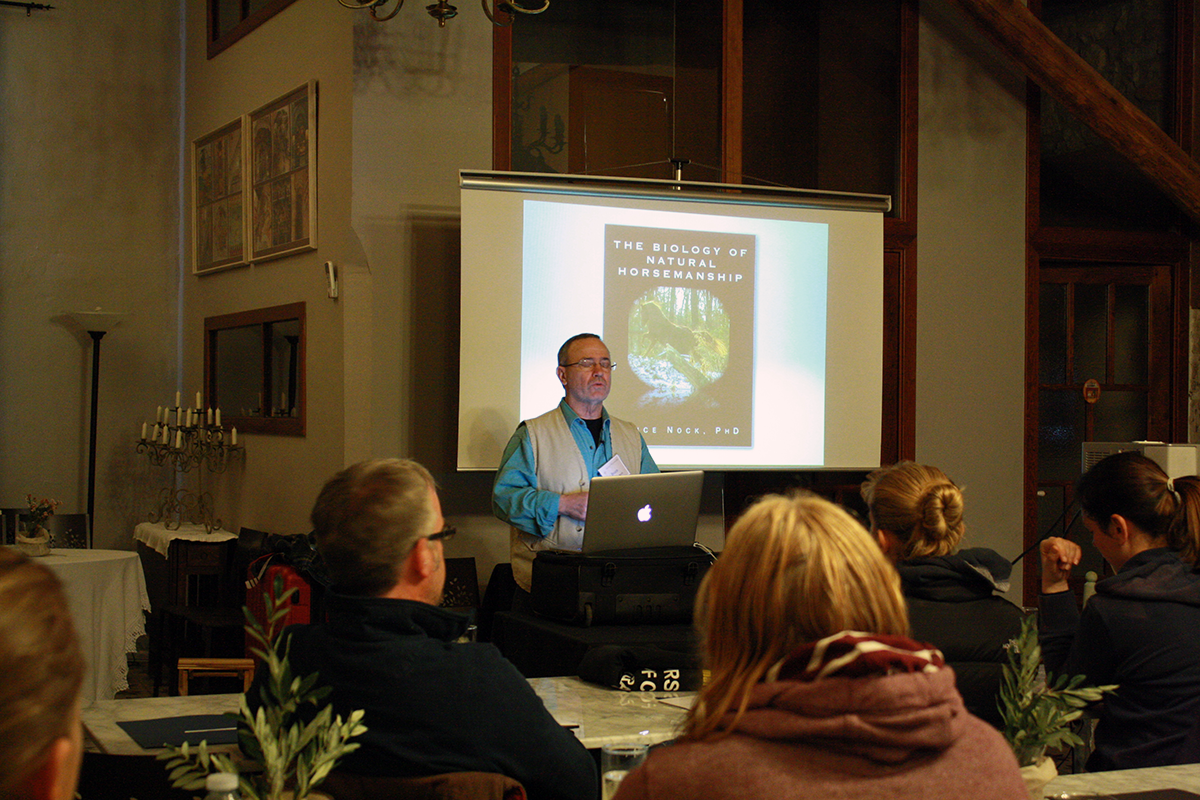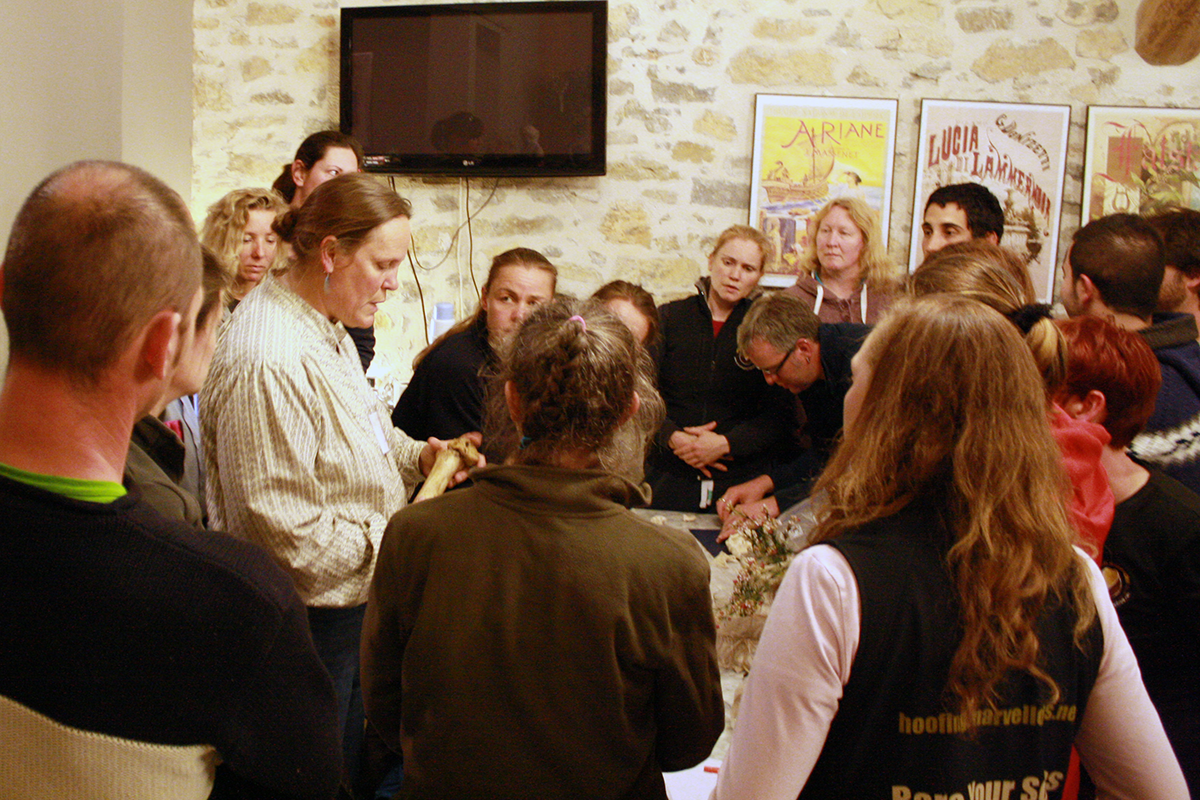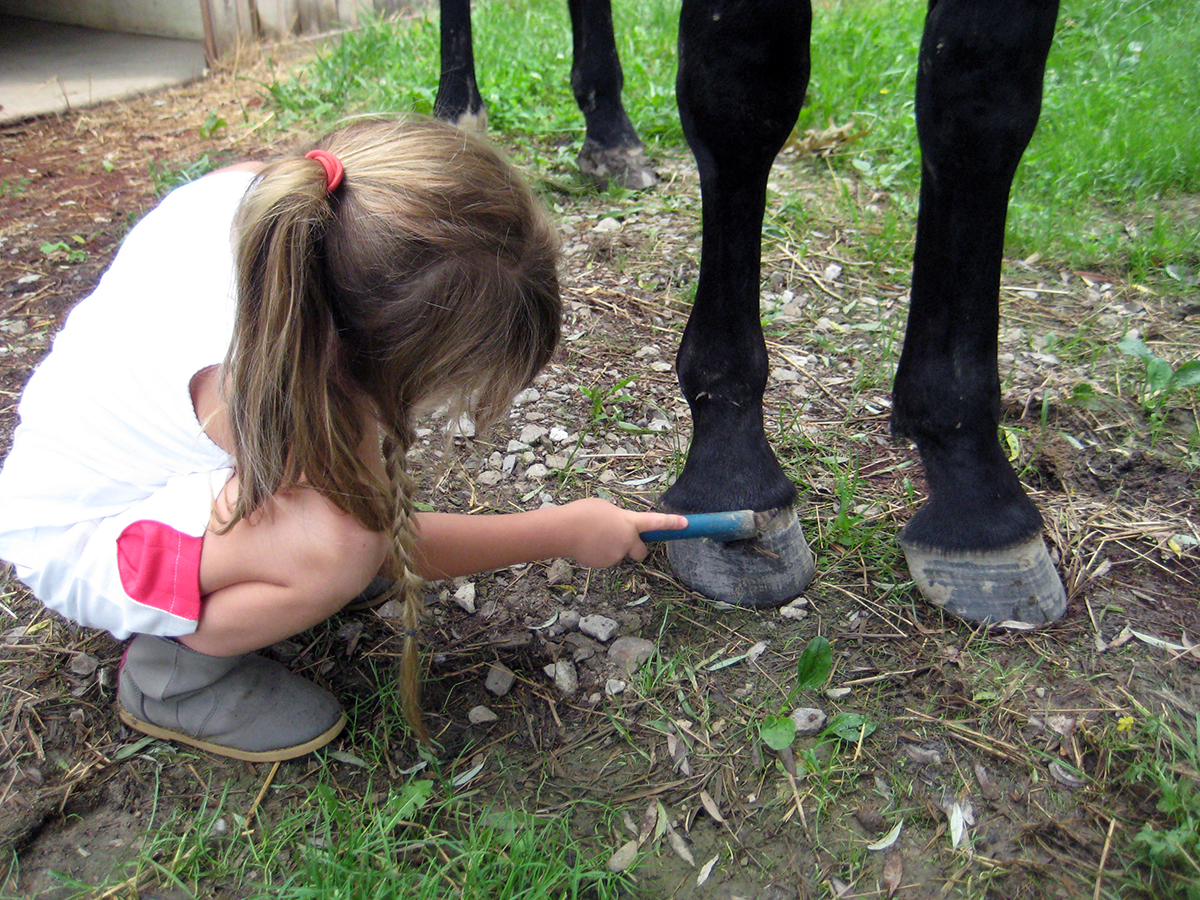It’s a constant struggle. The other night I gave a 2-year-old mustang born in a BLM holding facility his first real trim. I say “real” because he surely must’ve been trimmed at least once or twice in the holding facility, but almost certainly either in a squeeze chute, tranquilized, or both. As you can see, he has practically textbook-perfect feet, with smooth, healthy frogs and soles, and thick, uniform hoof walls. The problem was, the owner who’d adopted him had been told by her veterinarian just a couple of days earlier that he had an entire litany of front hoof and leg problems: both feet were clubbed, an extensor tendon was about to bow, he’d had a couple of bouts of laminitis and was currently experiencing another, and he had a bad case of thrush. She was therefore understandably in a state of near-panic when I showed up to trim the horse.
And so I was once again in the too-familiar position of trying to explain to the owner that her horse was not only going to be fine, but that he in reality had none of the problems described by the vet! The closest thing I could find was evidence that he probably previously had a fairly mild bacterial infection (but not thrush) in one frog.
Four nights earlier, I had been asked to look at a draft mare whose owner had been told by a farrier (not hers) that her horse’s lameness was being caused by laminitis. Her vet subsequently performed an exam, including radiographs, and confirmed the laminitis diagnosis, and her regular farrier was then called in to replace the shoes and put on pads. As was the case with the mustang, this mare didn’t have the problem identified by not just one, but by three, professionals! Instead, she had a very obvious and very severe infection of the frog in one of her front feet (see Mistaken Identity for more information on these infections) that was causing her lameness.
And I’ll save a complete description of the instance last month where the horse owner was told, after radiographs and nerve blocks, that his horse had “mild navicular” and desperately needed wedge shoes, when in reality he had sore hips, for my upcoming series on navicular disease.
I’m also not going to mention the amount of money that changed hands between owners and other professionals in these three situations, because it just makes me angry, and should make the horse owners angry as well!
So why do these misdiagnoses happen, you may ask? Simple: because, as I’ve mentioned in previous articles, most veterinarians just aren’t adequately trained in matters of the hoof (see An Interview with The Vet). I remember one young woman a month away from vet school graduation telling me she wished I could come lecture at the school because she’d learned nothing of substance about the equine hoof in the entire time she’d been there. And now, as she said, she was about to graduate, was out riding with a horse vet, and was constantly encountering hoof problems she knew very little about. I have to give her a lot of credit, though, for at least recognizing (and acknowledging) what she didn’t know, given that a lack of recognition is at the root of this problem (see The “Expert Syndrome”) in my opinion.
And the situation with the majority of hoof care providers isn’t much better. Most horse owners probably don’t realize that not only is there no legal or licensing requirement – no measure of competence needed – for calling yourself a hoof care professional in the vast majority of this country, but that what’s studied in the various horseshoeing schools, assuming your farrier even attended one, is metalworking. That means the person you’re entrusting with the primary care of your horse’s hooves may well have never studied the underlying mechanical or medical causes for the numerous pathologies that can occur in the equine foot, or even taken a basic anatomy class. Or understand why it’s important to do so.
At this point, I want to be very clear about two things. First, my goal in writing this is not to be unduly critical of veterinarians and other hoof care providers; on the contrary, I have a lot of respect for many of their considerable talents and knowledge that I don’t happen to possess. I just continue to hold out hope that they’ll recognize and acknowledge the gaps in their training and do something about them, for the sake of horses and their owners! And second, I’m not suggesting that licensing or other government-imposed requirements are the solution to the problem, because I think it’s been repeatedly demonstrated both here and in other countries that such things simply don’t work.
Instead, I’m offering a solution that relies on the horse owners’ help: I’m asking owners to place consumer-imposed “regulations” on their hoof care professionals to ensure they’ve been adequately educated and are up to the task. As I’ve said before, and as the anecdotes at the beginning of this article reinforce: in spite of what owners very much want to believe, most horses aren’t excelling because of receiving good hoof care, but are rather getting by in spite of receiving mediocre hoof care. I’ve already written quite a bit on this subject so I won’t say any more about it in this article, but a good introduction to sorting things out can be found here.
In keeping with that solution, I’m especially pleased to announce that the second offering of Liberated Horsemanship’s Kick Start Clinic will take place at The Ohio State University ATI in Wooster, Ohio (where I teach) this coming October 11th – 13th. This intensive 3-day program is aimed squarely at the hoof care professional interested in filling in some of those knowledge gaps with respect to hoof care theory & practice, in an effort to help the already-experienced professional onto the fast track to becoming a Certified Hoof Care Professional through Liberated Horsemanship. And that means something. Being certified through our program indicates that the hoof care provider has not only spent many hours trimming hooves of all types, but has also successfully completed a whole-horse-centric education and examination on hoof care theory & practice, anatomy, and booting, as well as other management issues such as nutrition and stress management. And those are the minimum requirements for certification; advanced clinic topics currently include the veterinarian/trimmer relationship, physical therapy, custom boot fitting, advanced anatomy, biomechanics & movement, dentistry, and managing hoof pathologies.
Equally as exciting is that Dr. Nock has agreed to open up the lecture portions (but not the trimming portions) of this clinic to auditors, which means any interested party can receive over 10 hours of education in hoof care – the same education taught to hoof care professionals from all over the world – for only $400! This is a great opportunity to learn from four highly-educated and eminently-qualified acknowledged experts in the field of hoof care.
So please consider joining us for three highly-informative and entertaining days in October. I promise you an educational experience that will put you in a position to better assess – and appreciate – the abilities and knowledge of your veterinarian and hoof care provider. Invite your veterinarian, hoof care provider, and fellow horse owners to attend as well. Even consider joining forces with other horse owners in your barn and offering to help defray the expense for your farrier to attend. He or she won’t regret it, and you and your horses will be much better off for it!
Hope to see you in October…
(And a special note of thanks to my assistant “Faith” for cleaning the mustang’s hooves for their photo session!)






